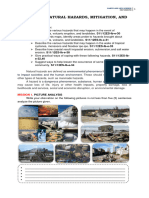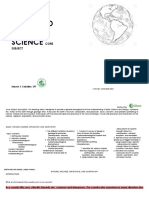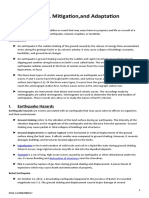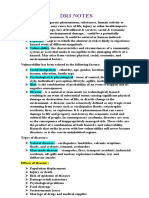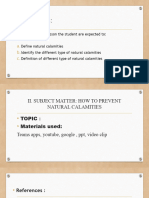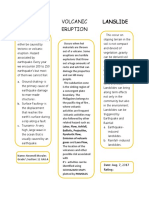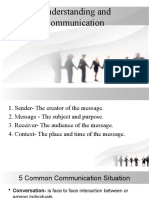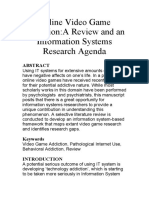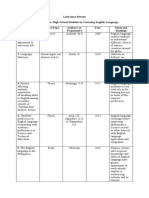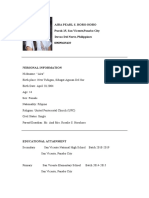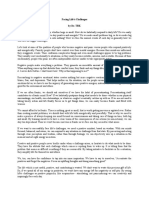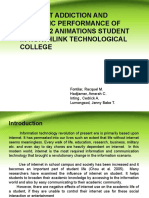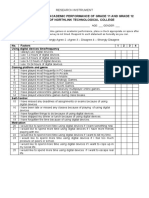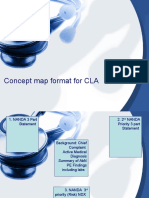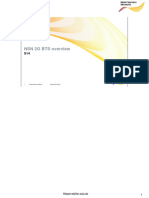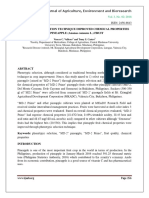0% found this document useful (0 votes)
60 views12 pagesScience Report
Natural hazards are events that occur naturally and can potentially cause damage. This document discusses three common geologic hazards: earthquakes, volcanic eruptions, and landslides. Earthquakes are caused by movement of tectonic plates and can result in ground shaking, surface faulting, and tsunamis. Volcanic eruptions occur when magma is released from a vent, either effusively or explosively. Landslides happen when rock or debris moves down a slope, often due to rainfall, earthquakes, or lack of vegetation.
Uploaded by
Carla CarlaCopyright
© © All Rights Reserved
We take content rights seriously. If you suspect this is your content, claim it here.
Available Formats
Download as PPTX, PDF, TXT or read online on Scribd
0% found this document useful (0 votes)
60 views12 pagesScience Report
Natural hazards are events that occur naturally and can potentially cause damage. This document discusses three common geologic hazards: earthquakes, volcanic eruptions, and landslides. Earthquakes are caused by movement of tectonic plates and can result in ground shaking, surface faulting, and tsunamis. Volcanic eruptions occur when magma is released from a vent, either effusively or explosively. Landslides happen when rock or debris moves down a slope, often due to rainfall, earthquakes, or lack of vegetation.
Uploaded by
Carla CarlaCopyright
© © All Rights Reserved
We take content rights seriously. If you suspect this is your content, claim it here.
Available Formats
Download as PPTX, PDF, TXT or read online on Scribd
/ 12


